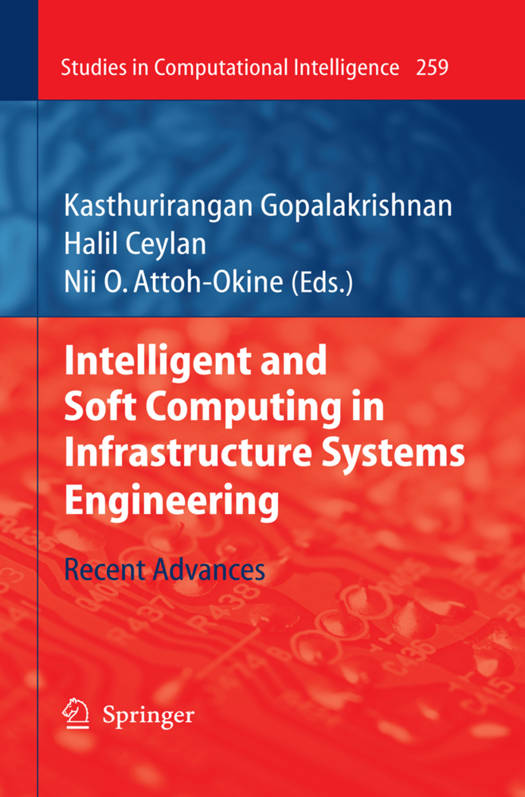
- Afhalen na 1 uur in een winkel met voorraad
- Gratis thuislevering in België vanaf € 30
- Ruim aanbod met 7 miljoen producten
- Afhalen na 1 uur in een winkel met voorraad
- Gratis thuislevering in België vanaf € 30
- Ruim aanbod met 7 miljoen producten
Zoeken
Intelligent and Soft Computing in Infrastructure Systems Engineering
Recent Advances
€ 195,95
+ 391 punten
Omschrijving
The term "soft computing" applies to variants of and combinations under the four broad categories of evolutionary computing, neural networks, fuzzy logic, and Bayesian statistics. Although each one has its separate strengths, the complem- tary nature of these techniques when used in combination (hybrid) makes them a powerful alternative for solving complex problems where conventional mat- matical methods fail. The use of intelligent and soft computing techniques in the field of geo- chanical and pavement engineering has steadily increased over the past decade owing to their ability to admit approximate reasoning, imprecision, uncertainty and partial truth. Since real-life infrastructure engineering decisions are made in ambiguous environments that require human expertise, the application of soft computing techniques has been an attractive option in pavement and geomecha- cal modeling. The objective of this carefully edited book is to highlight key recent advances made in the application of soft computing techniques in pavement and geo- chanical systems. Soft computing techniques discussed in this book include, but are not limited to: neural networks, evolutionary computing, swarm intelligence, probabilistic modeling, kernel machines, knowledge discovery and data mining, neuro-fuzzy systems and hybrid approaches. Highlighted application areas include infrastructure materials modeling, pavement analysis and design, rapid interpre- tion of nondestructive testing results, porous asphalt concrete distress modeling, model parameter identification, pavement engineering inversion problems, s- grade soils characterization, and backcalculation of pavement layer thickness and moduli.
Specificaties
Betrokkenen
- Uitgeverij:
Inhoud
- Aantal bladzijden:
- 325
- Taal:
- Engels
- Reeks:
- Reeksnummer:
- nr. 259
Eigenschappen
- Productcode (EAN):
- 9783642045851
- Verschijningsdatum:
- 19/11/2009
- Uitvoering:
- Hardcover
- Formaat:
- Genaaid
- Afmetingen:
- 156 mm x 234 mm
- Gewicht:
- 693 g

Alleen bij Standaard Boekhandel
+ 391 punten op je klantenkaart van Standaard Boekhandel
Beoordelingen
We publiceren alleen reviews die voldoen aan de voorwaarden voor reviews. Bekijk onze voorwaarden voor reviews.







